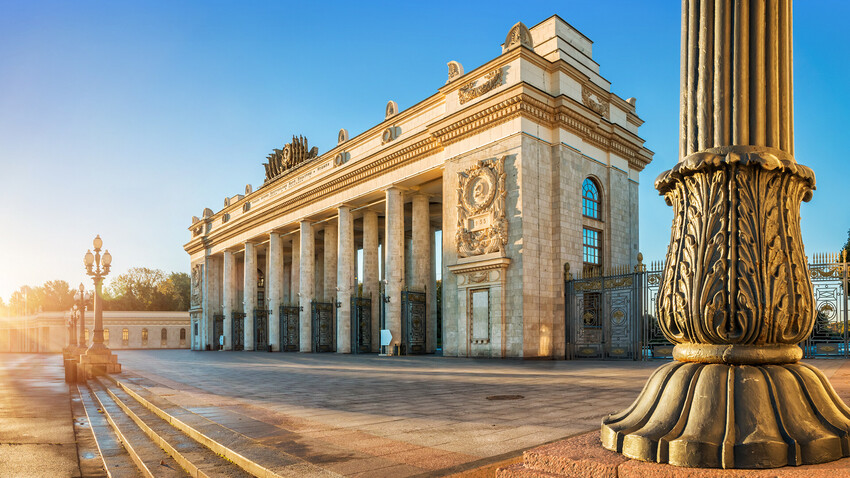
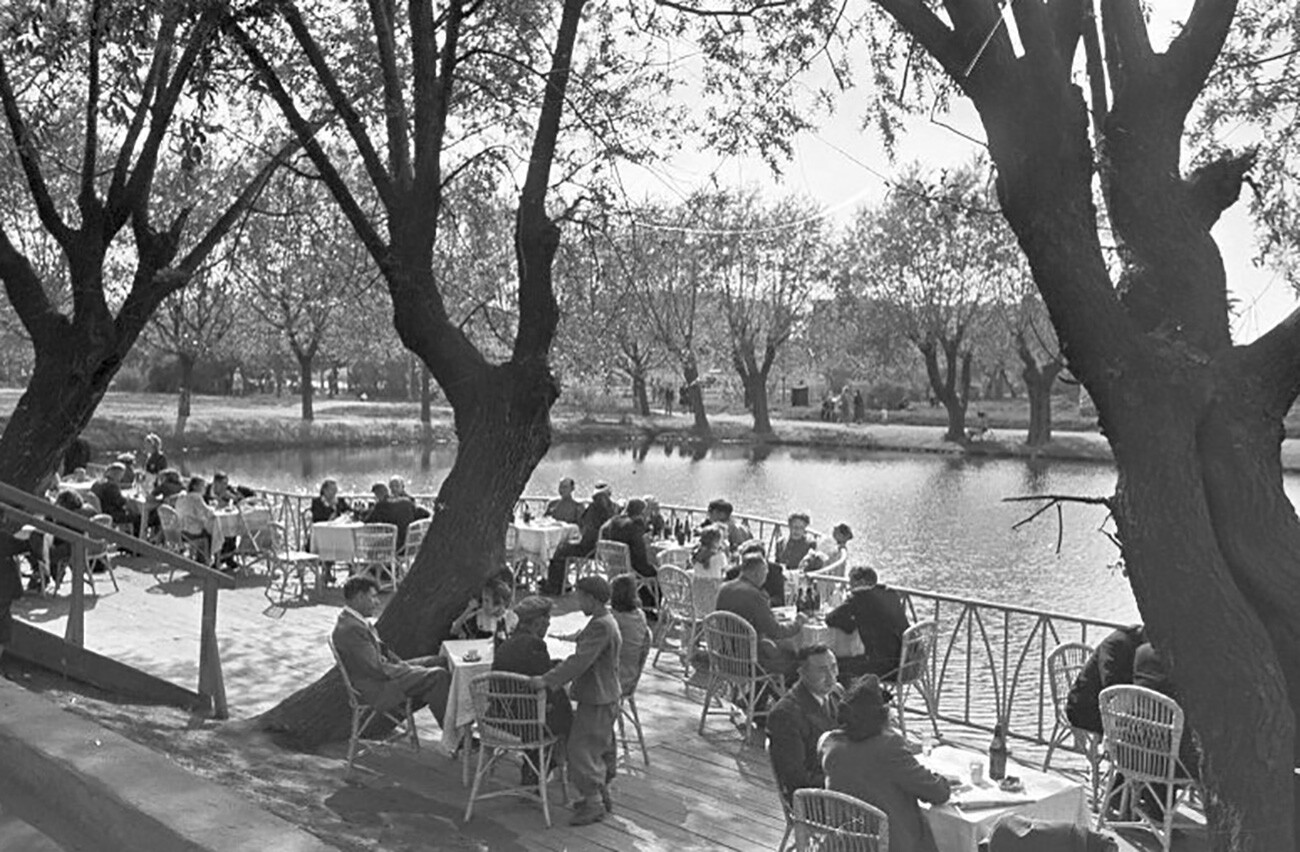
Gorky Park. Summer cafe. Late 1930s
Emmanuil Yevzerikhin/MAMM/MDF/russiainphoto.ruGorky Central Park of Culture and Leisure – that’s what this public space is officially called, with people simply calling it ‘Gorky Park’.
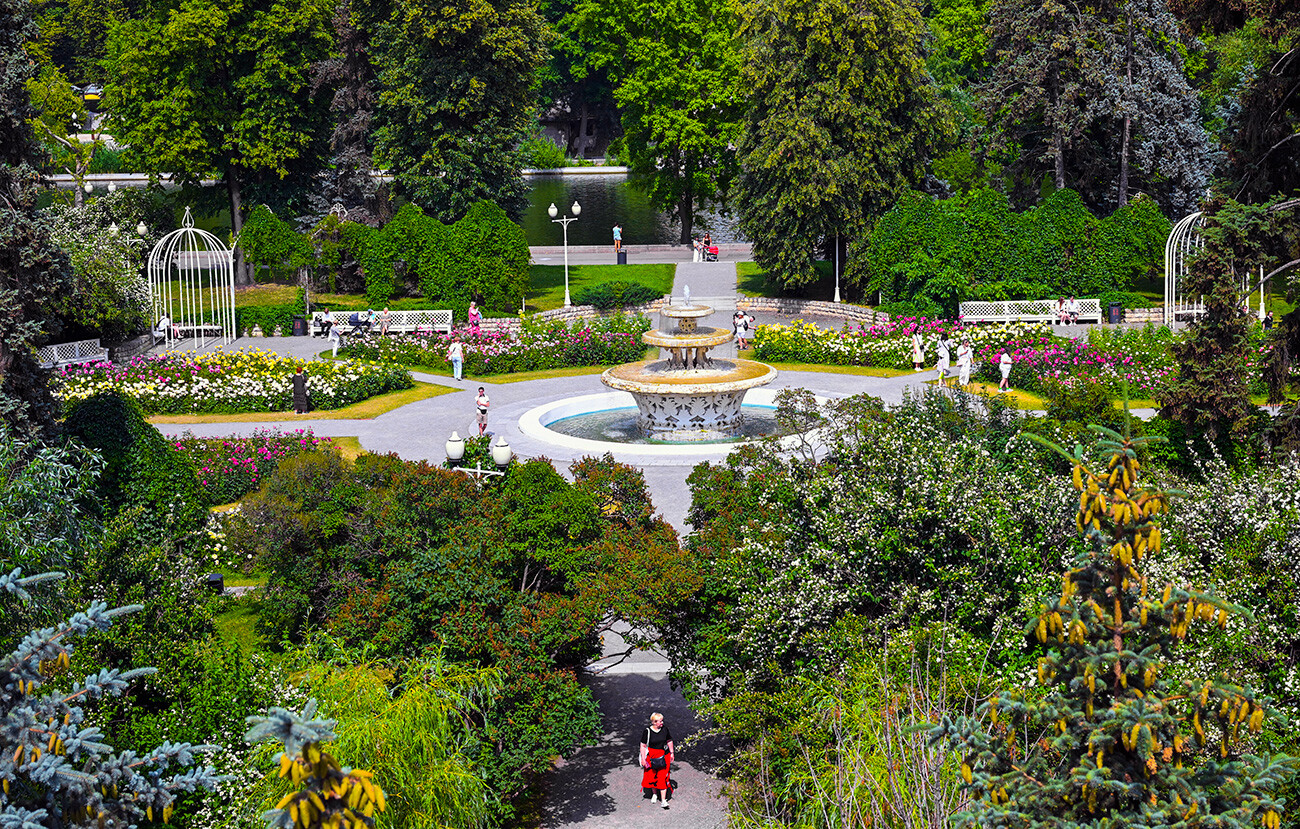
People strolling around Gorky Park
Alexei Mayshev/SputnikIt’s located to the southwest of the center, stretching along the bend of the Moskva River.
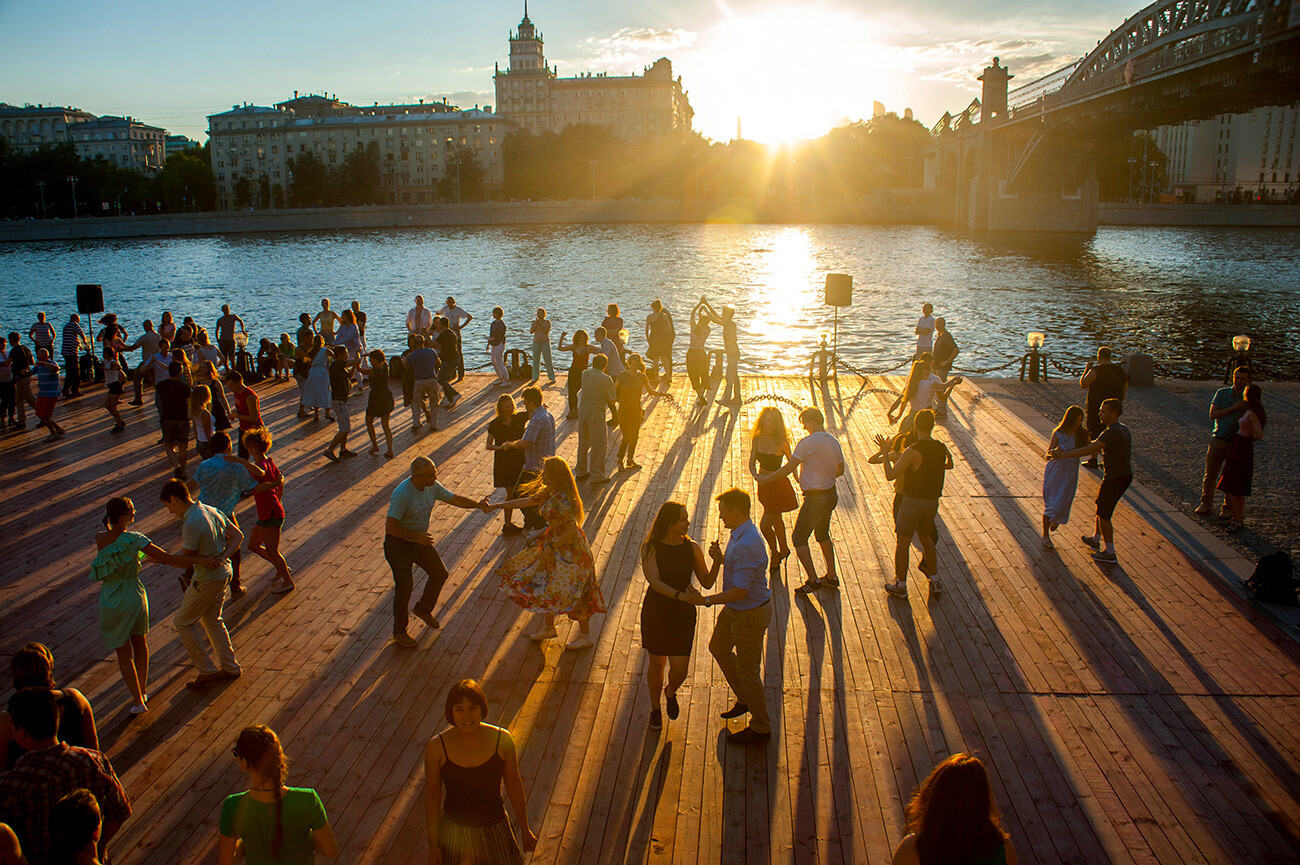
People dancing at the Gorky Park's embankment
Global Look PressThe modern Gorky Park sprawls across almost 220 hectares of land, including large green spaces - Neskuchny Sad (‘Not Boring Garden’) and Vorobyovy Gory (‘Sparrow Hills’), as well as the Muzeon park of arts.
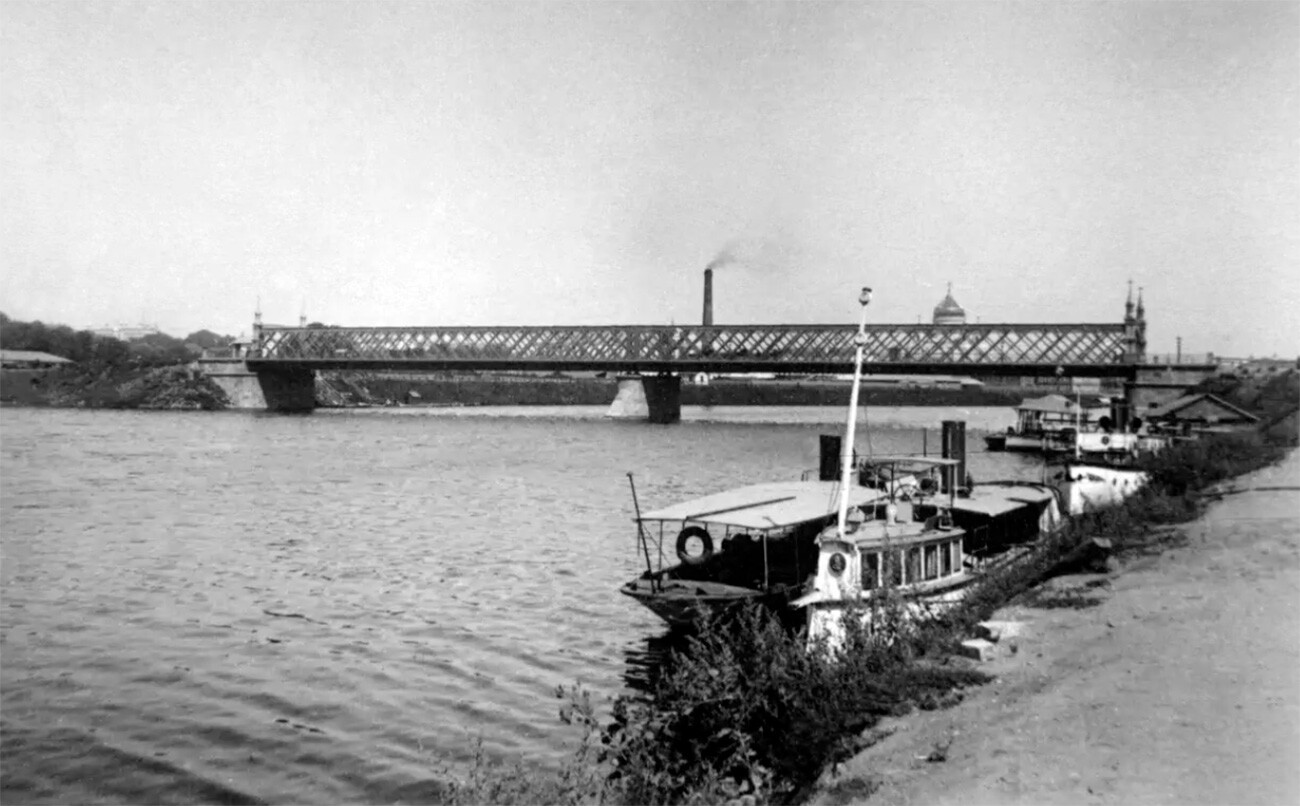
Alexandrinskaya (now Pushkinskaya) embankment and Krymsky (Crimea) Bridge, 1912-14
Archive photoThe history of Gorky Park began from Neskuchny Sad. In the 18th century, the country estates of noble Russian families were located there, along the right bank of the Moskva River – the Golitsyns, the Orlovs and the Trubetskoys. The estate of the latter was called ‘Neskuchnoye’.
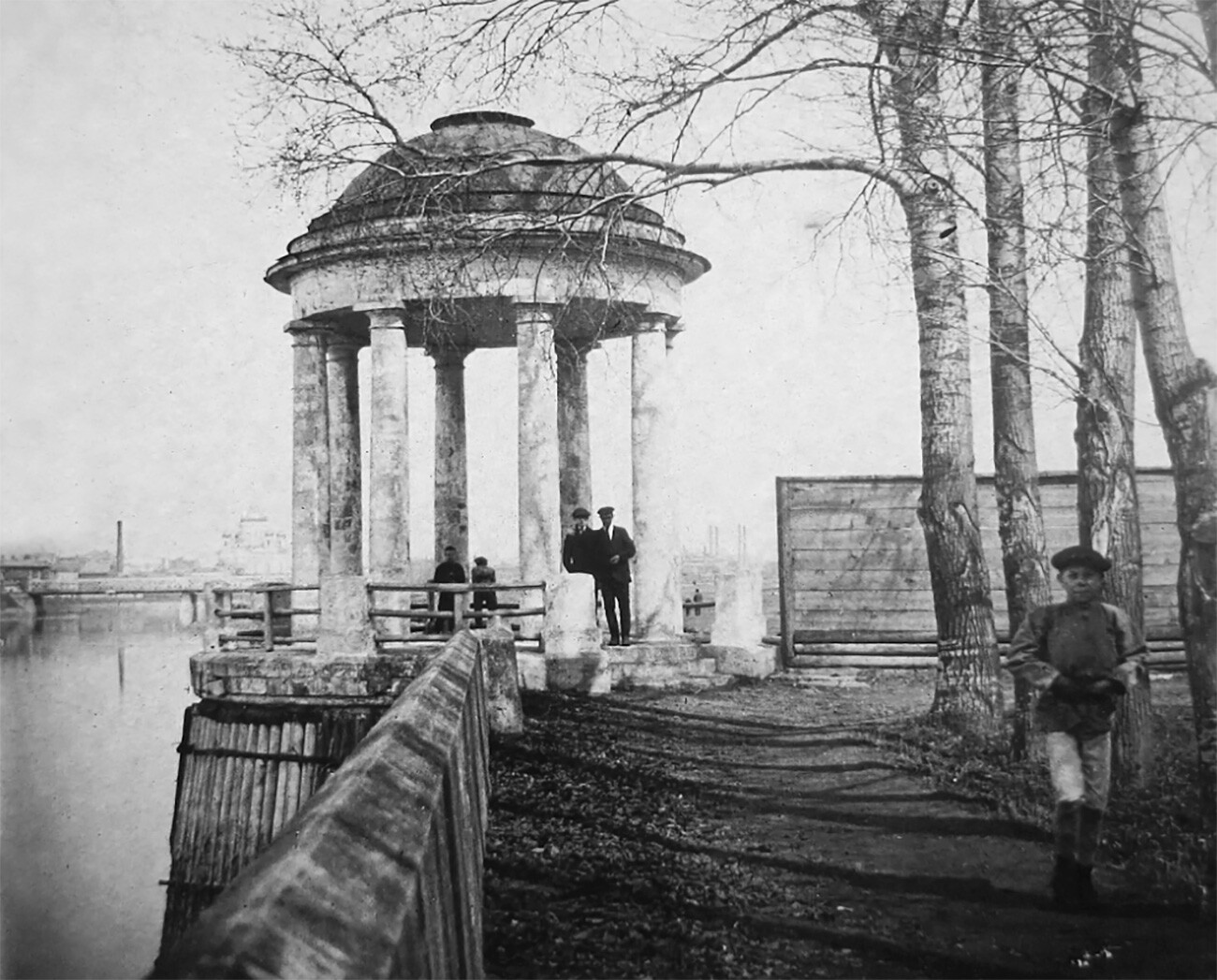
Golitsyn rotonda of the 19th century, 1910s
Archive photoIt hosted grand gardens, where the capital’s nobility loved to take walks; different entertainment venues were made for them there. One after another, these estates were bought out by Nicholas I; in the 1820s-1830s, he created Neskuchny Sad and built a summer theater.
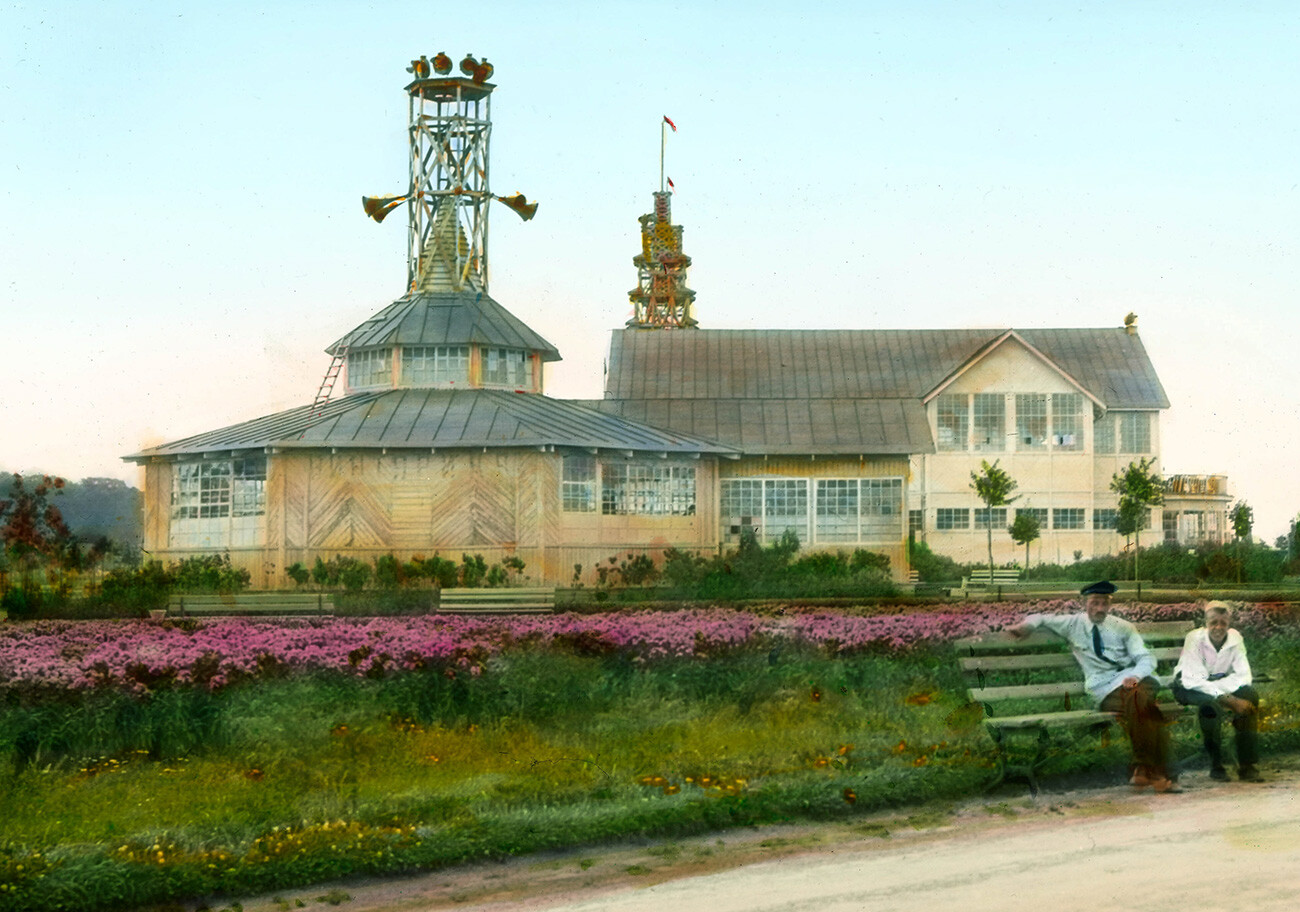
Gorky Park in 1930 through the eyes of an American photographer
Branson DeCouAfter the revolution, Neskuchny Sad was nationalized and opened for visitors. In 1923, it hosted the first large agriculture and craftsmanship exhibition, long before a separate park was built for it, presently known as VDNKh.
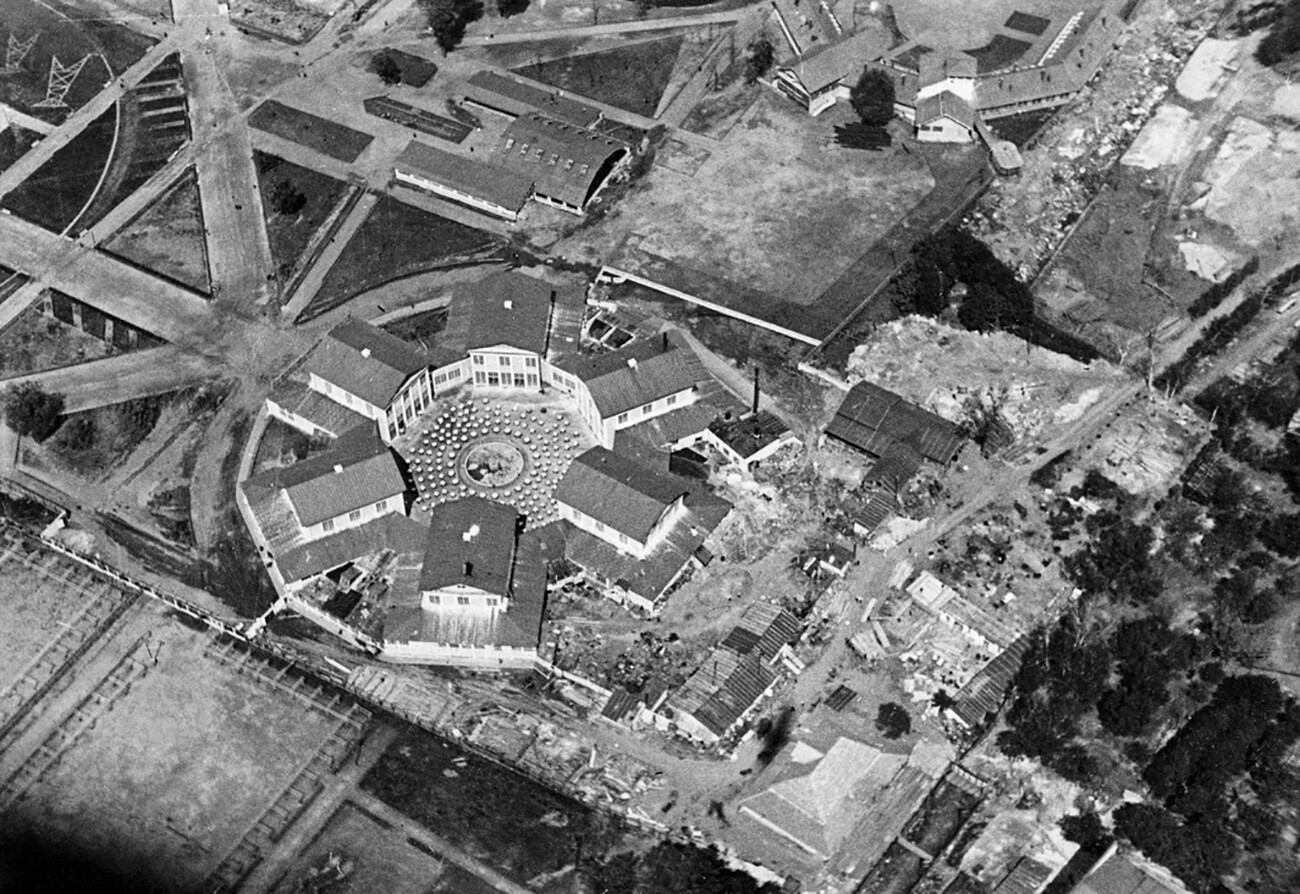
The ‘Machines and Tools’ pavilion of the agriculture and craftsmanship exhibition, 1923
Union of Russian Photo Artists/russiainphoto.ruThe ‘Machines and Tools’ pavilion, erected for the exhibition, survives to our day – a Constructivist building in the shape of a hexagon. Currently, the Garage Museum of Contemporary Art is undergoing a reconstruction (read about this museum below).
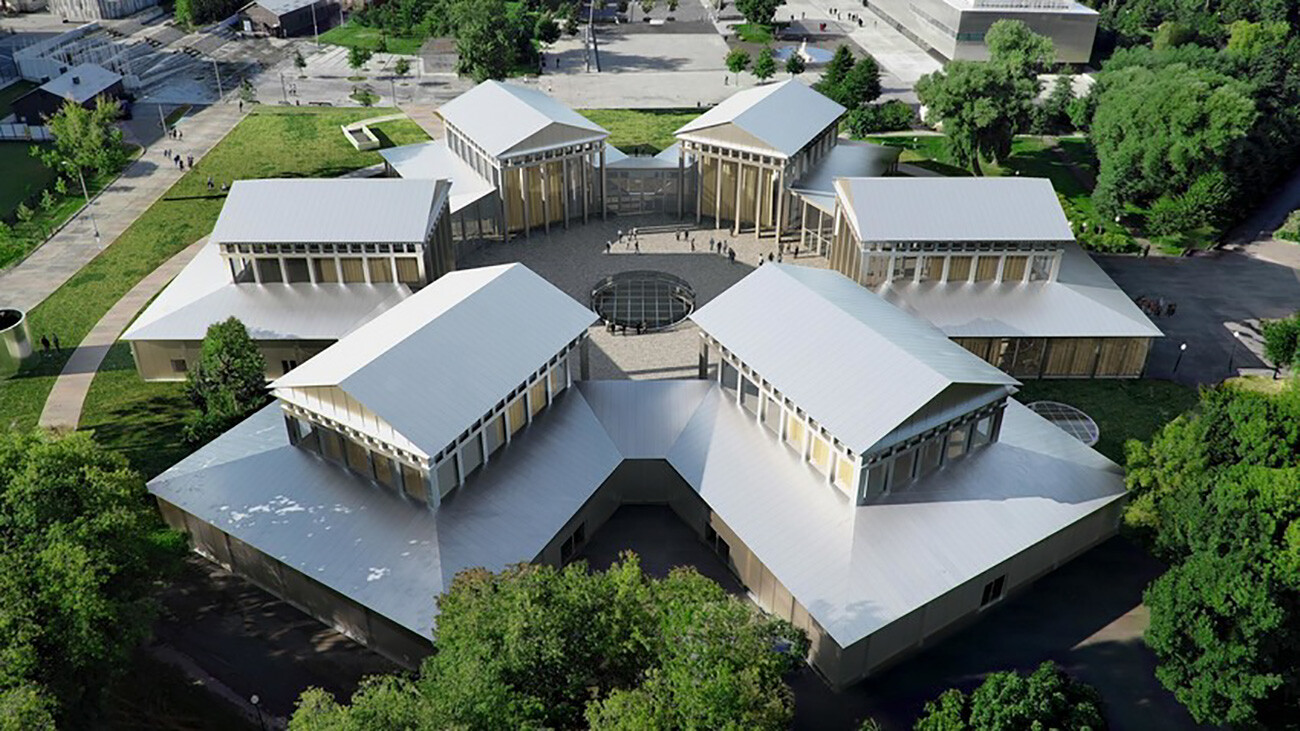
Garage Museum project for the reconstruction of the "Machines and Tools" pavilion ("Hexagon")
Press photoThe planning of the future park was headed by avant-garde architect Konstantin Melnikov; other prominent innovating architects – El Lissitzky, Alexey Shchusev and Alexander Vlasov – also took part in the construction.
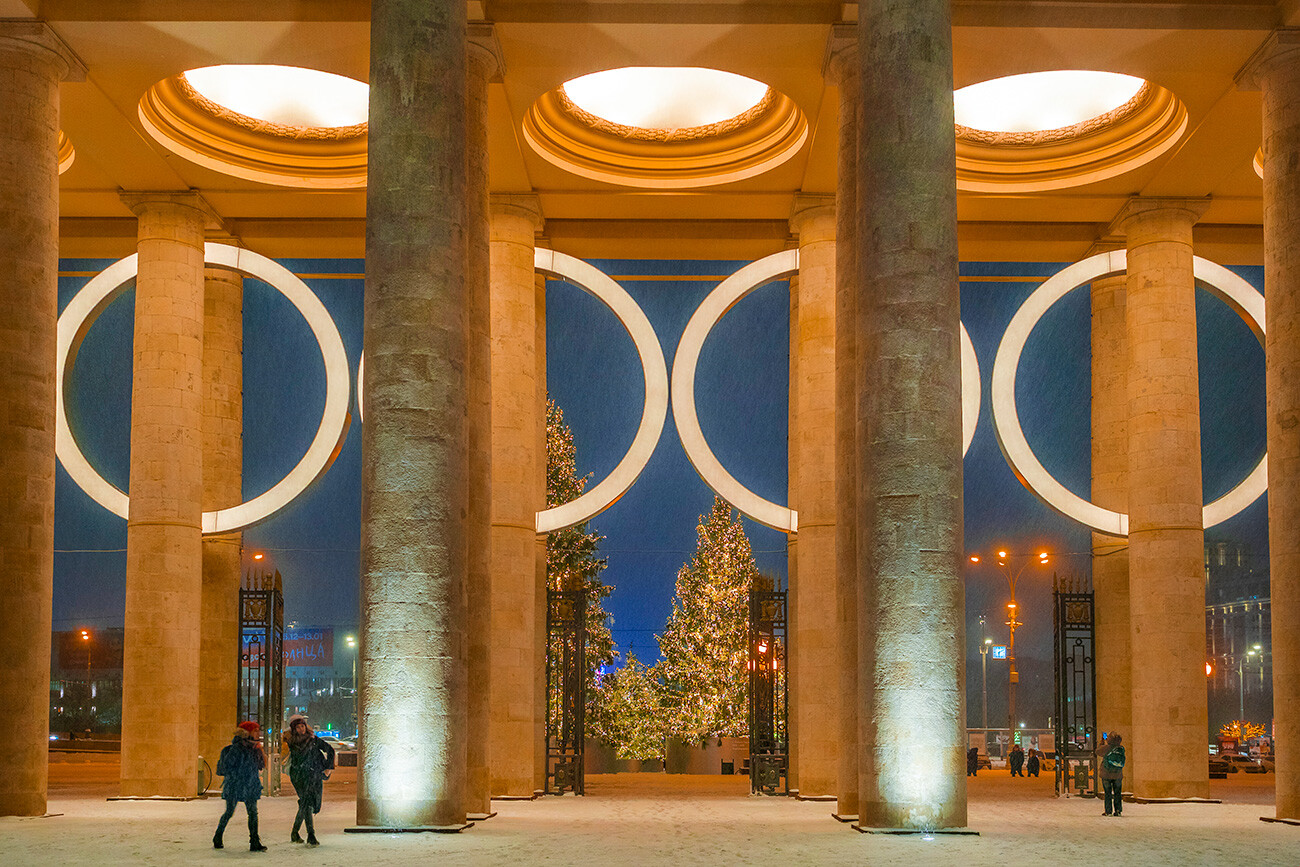
Christmas tree in front of the main entrance of Gorky Park.
Konstantin Kokoshkin/Global Look PressAnd the famous main entrance arch was designed by Georgy Shchyuko in the 1950s.
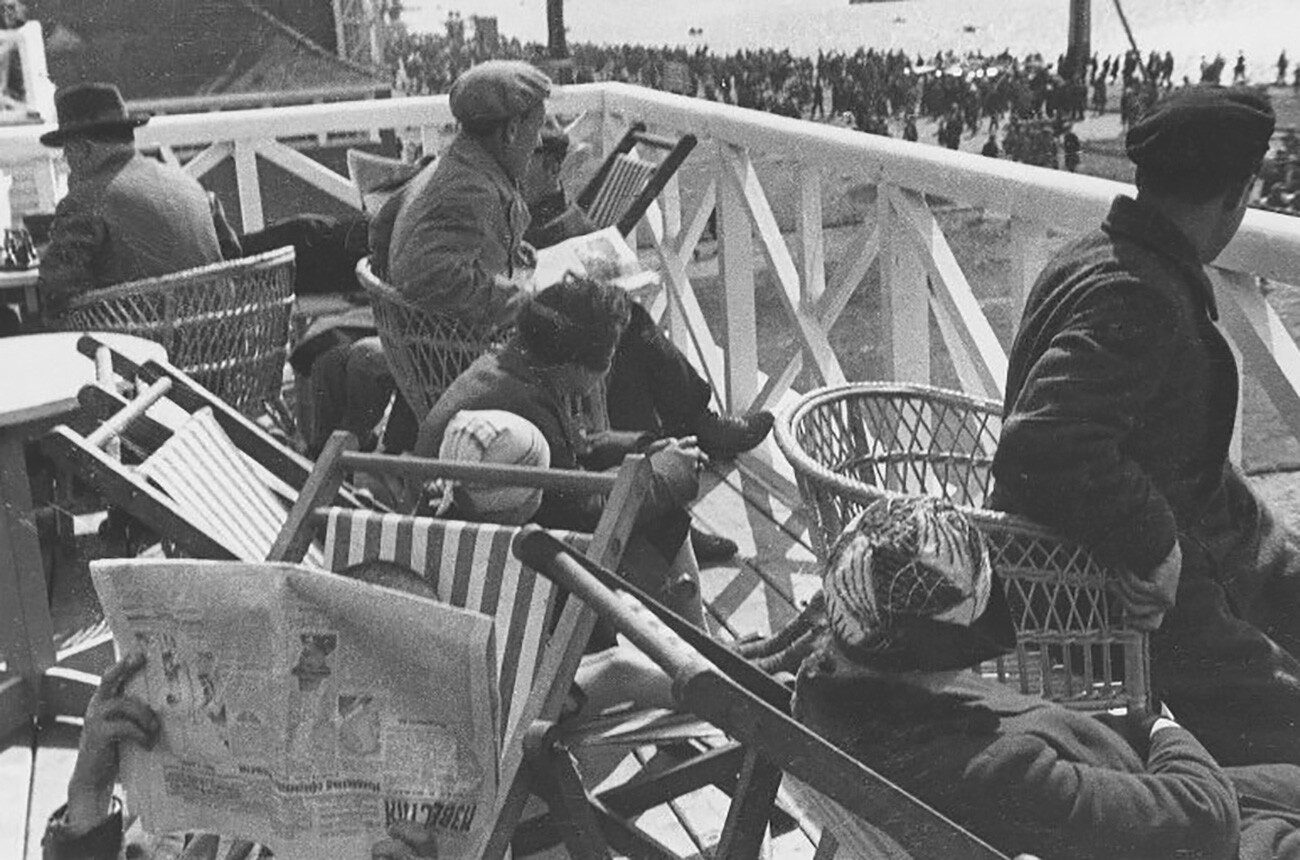
Gorky Park in 1932
Alexander Rodchenko/MAMM/MDF/russiainphoto.ruOn August 12, 1928, one of the first Soviet parks of culture and leisure was opened here. Cafes, dance and fitness grounds, hammocks – all the conditions for leisure were created for the working masses. Apart from that, they were supposed to spend their time there culturally.
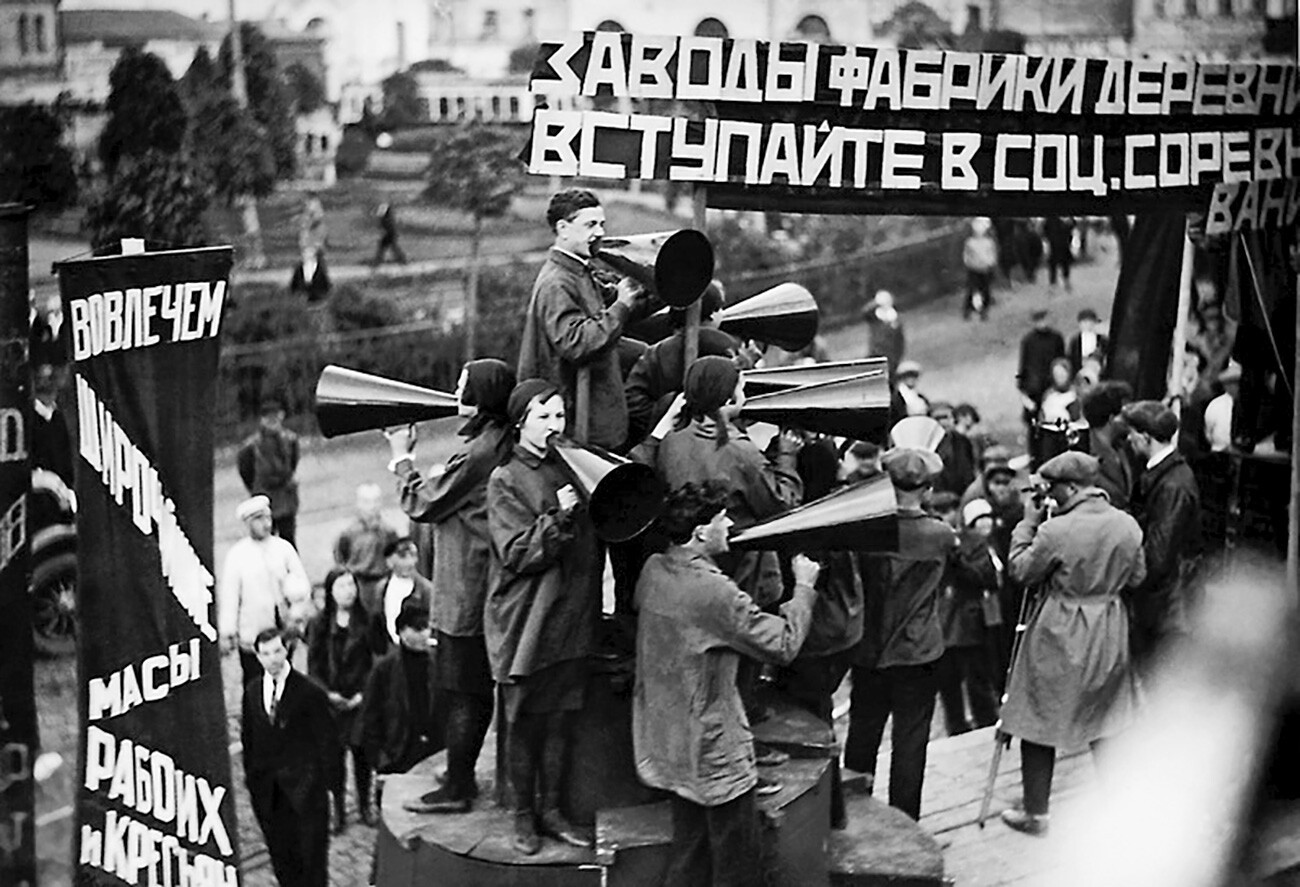
Opening of the Central Park of Culture and Leisure in Moscow. Propaganda group "Blue Blouse" performing, 1928
Russian State Film and Photo Archives, Krasnogorsk/russiainphoto.ruHere, ‘spoken’ newspapers with the latest news were read to the proletariat; propaganda brigades delivered speeches, as well.
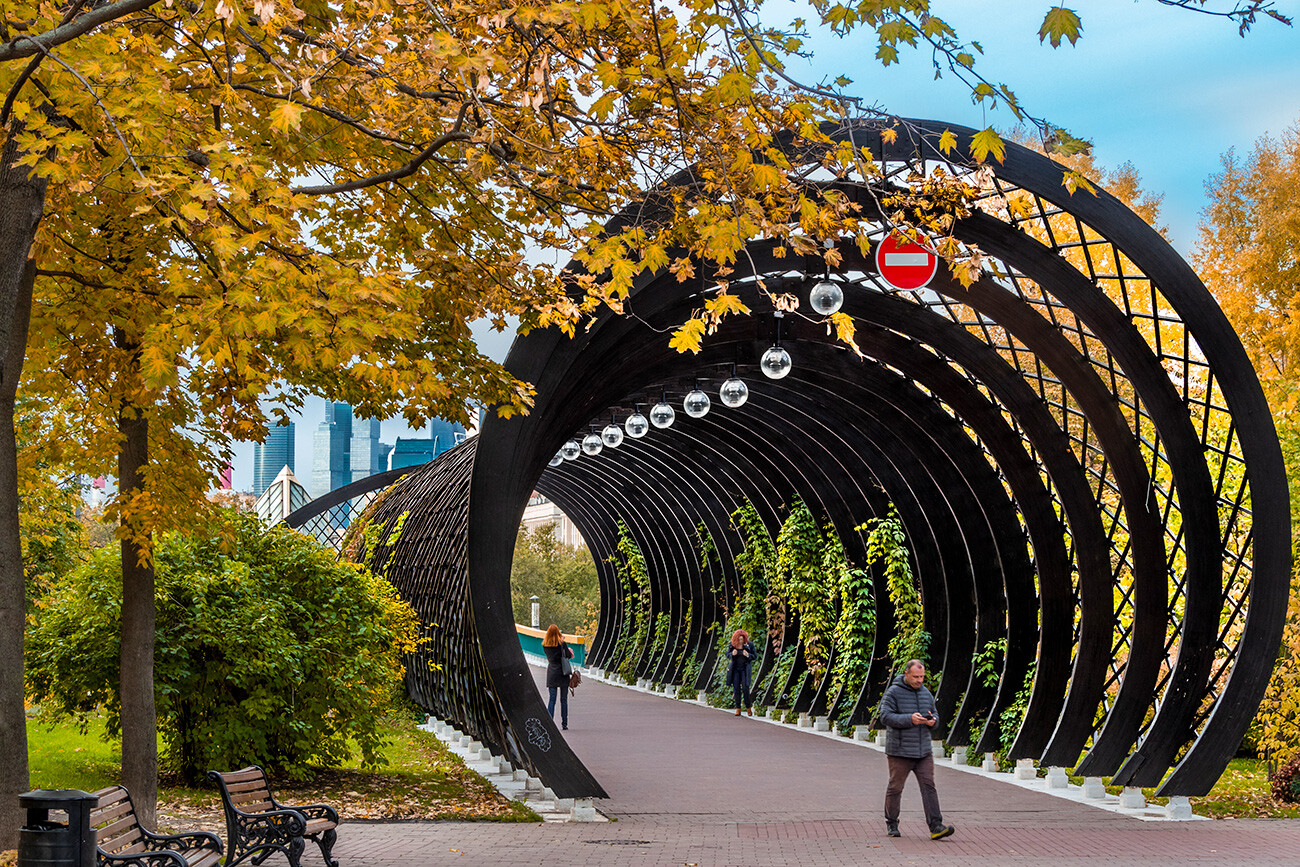
Autumn in Gorky Park
Konstantin Kokoshkin/Global Look PressIn 1934, the Green Theater under the open sky with a capacity of 20,000 people was opened, where musical, theater and circus performances were held.

Gorky Park's main alley, 1935
Ivan Shagin/russiainphoto.ruIn 1932, the park was renamed after main Soviet author Maxim Gorky – and this was uncharacteristically done during his lifetime.
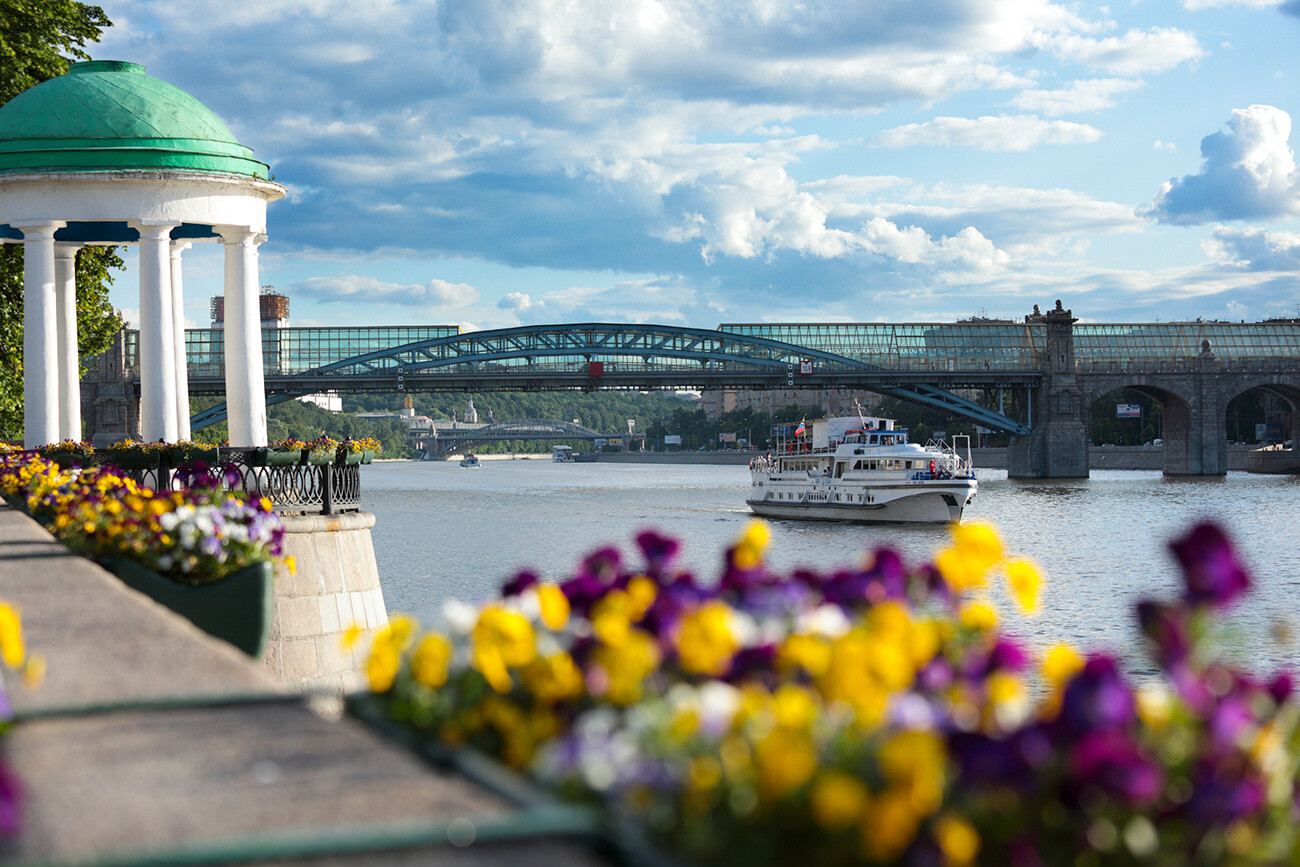
Golitsyn rotonda and Andreevsky Bridge
Legion MediaOn a side note, the still-living writer also didn’t appreciate the renaming of his native city Nizhny Novgorod to Gorky. During these years, Soviet authorities created a whole cult of personality around the name of Gorky, so other cities of the USSR saw streets, parks, as well as squares renamed with his last name.
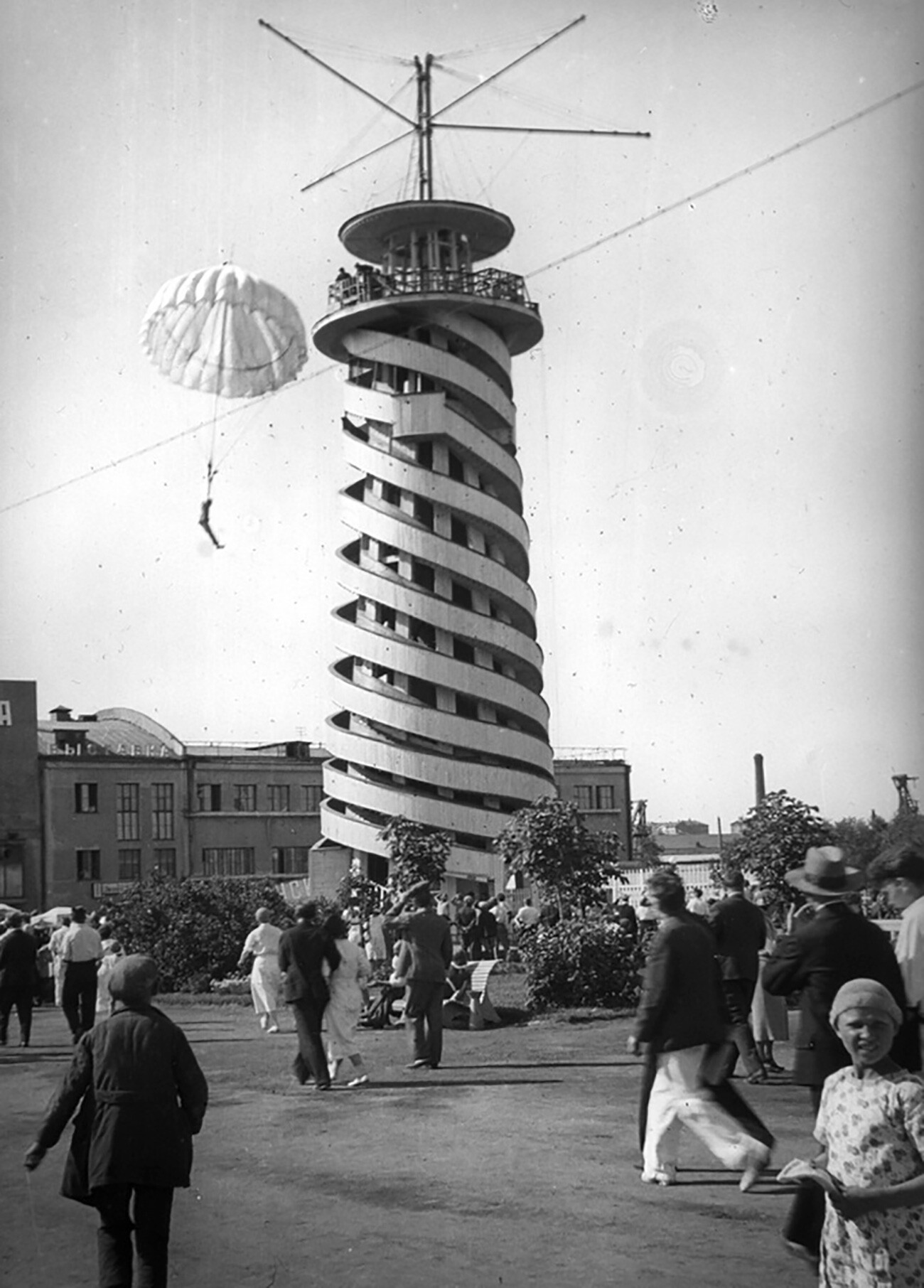
Parachute tower in Gorky Park, 1955
Alexander Arkhipov archive/russiainphoto.ruIn the 1930s, the USSR saw a whole boom of parachuting; a unique building appeared in Gorky Park – a parachute tower. It was quite a popular attraction; anyone could descend from it with a parachute or in a spiraling chute, sitting on a special rug.
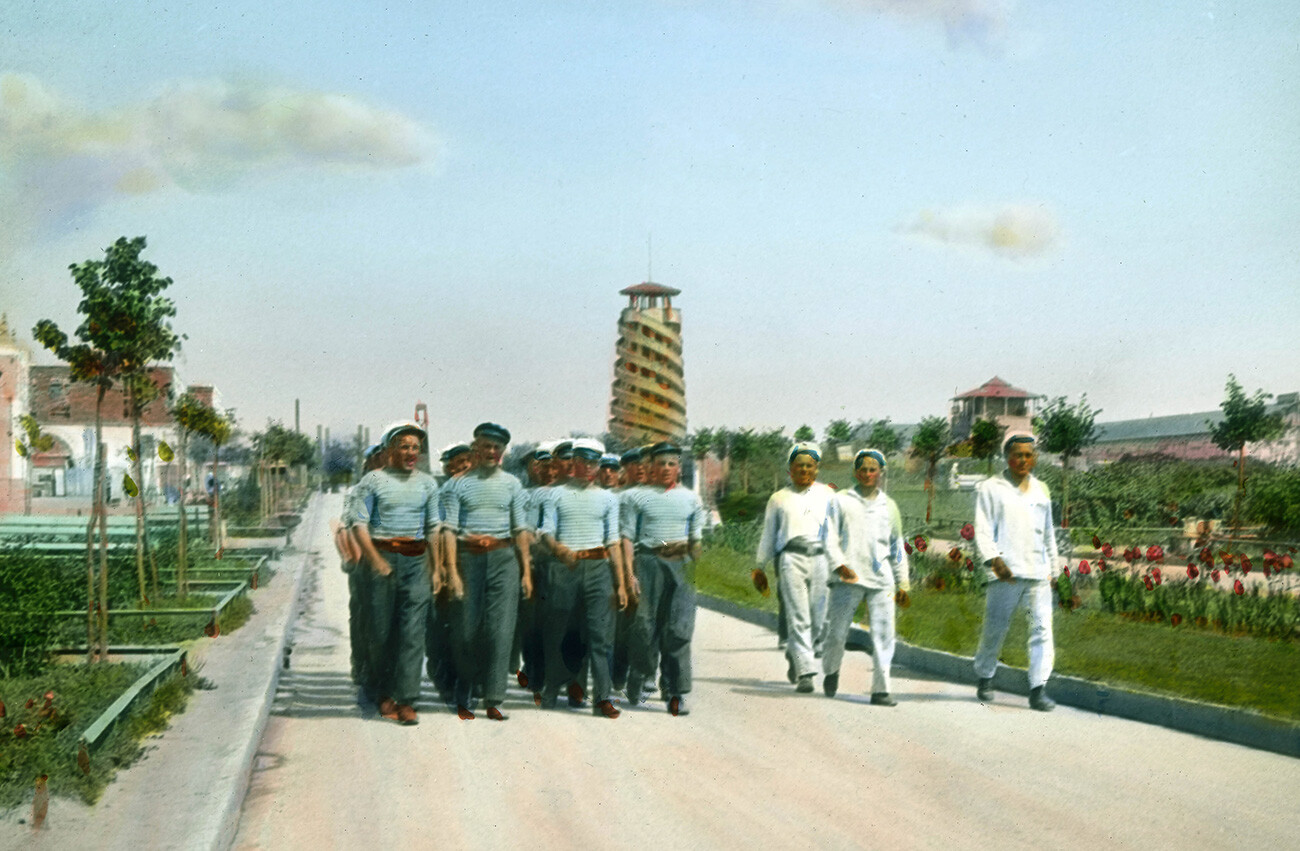
Gorky Park in 1931
Branson DeCouIn the 1950s, the tower was disassembled, because it was deemed too hazardous; ironically, before that, such attractions had been promoted across the entire USSR and in other neighboring countries.
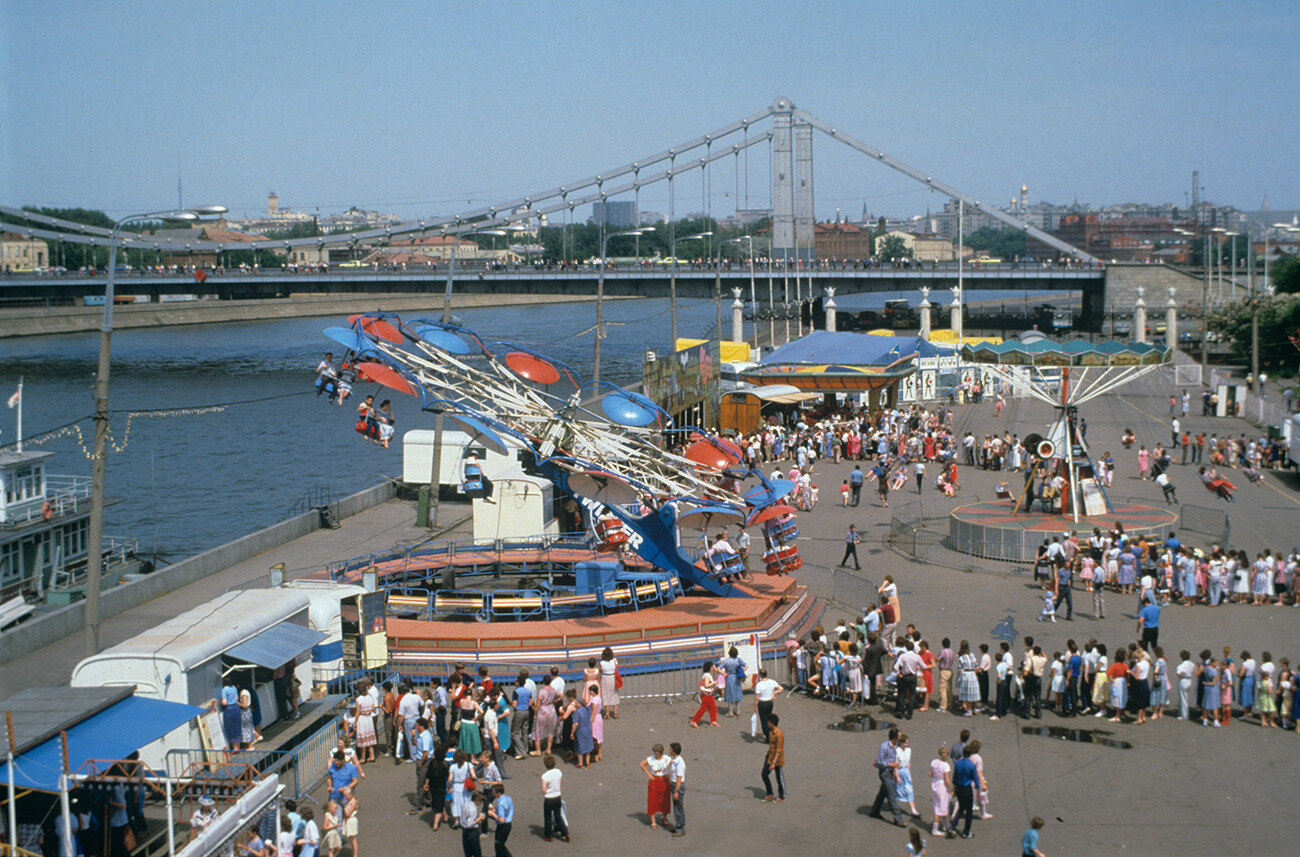
Amusement rides on Moskva River bank at Gorky Park, 1989
Vladimir Vyatkin/SputnikFor the first generation of children who were born after the collapse of the Soviet Union, Gorky Park was associated with cotton candy, donuts and – most importantly – with rides.
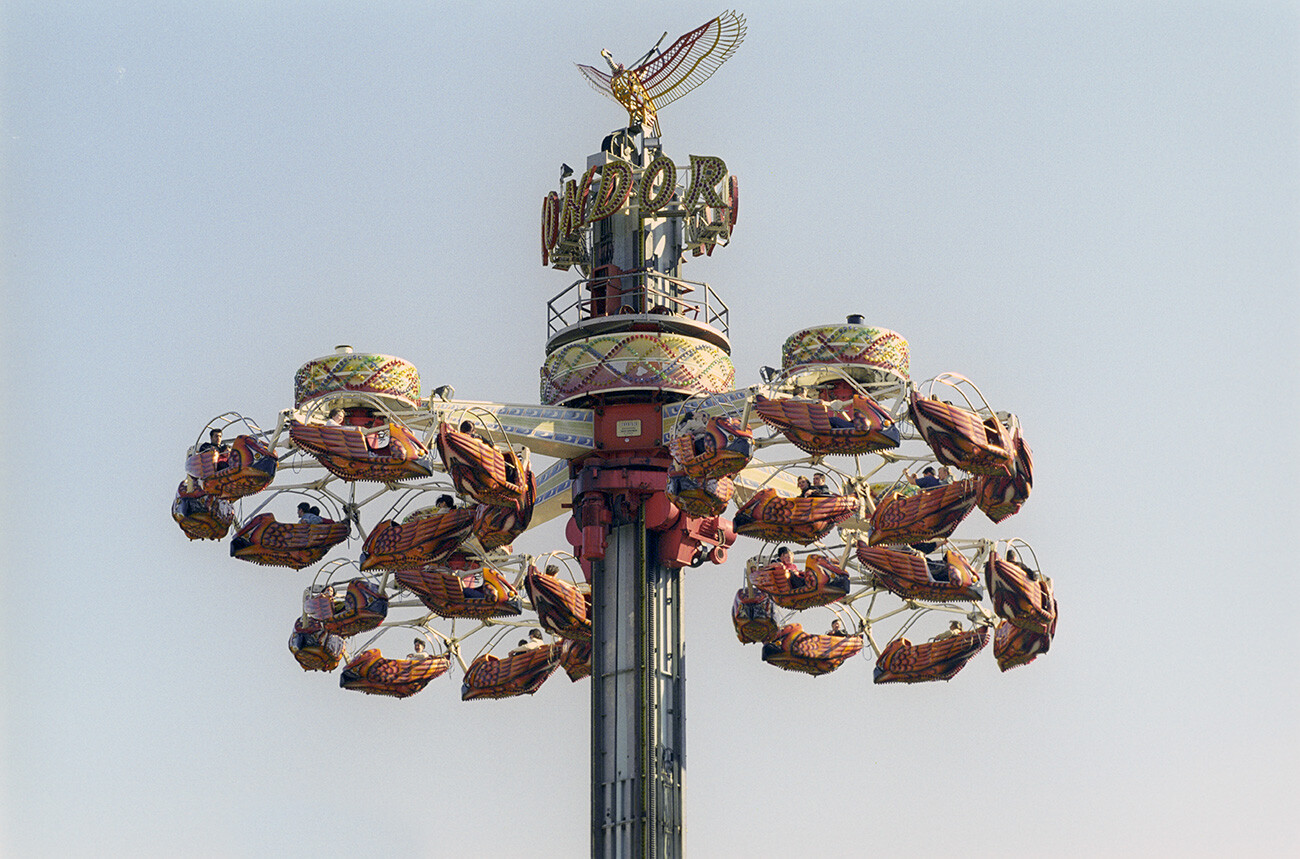
Condor amusement ride, 1998
Dmitry Korobeinikov/SputnikIn the Soviet era, there were just simple carousels, but, from the 1990s and until the beginning of the 2010s, dozens of rides operated in the park – basically like a sort of local “Disneyland”.
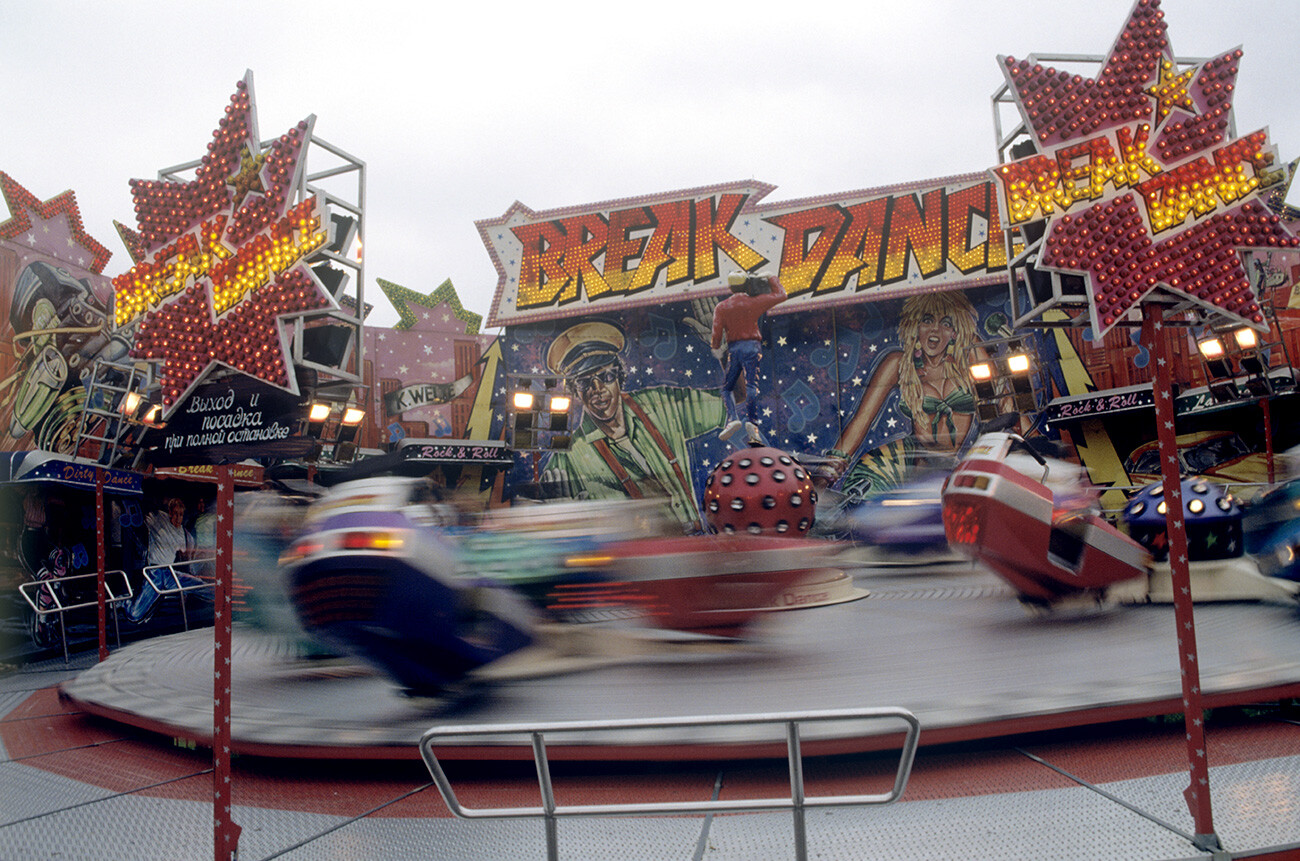
'Breakdance' ride, 1995
Andrei Solomonov/SputnikA rollercoaster, a haunted mansion, the ‘Niagara’ water slide, flying cars, trampolines, scary towers with spinning gondolas, a bungee over a pond and much more. There were also two Ferris wheels in Gorky Park – one smaller and one larger.
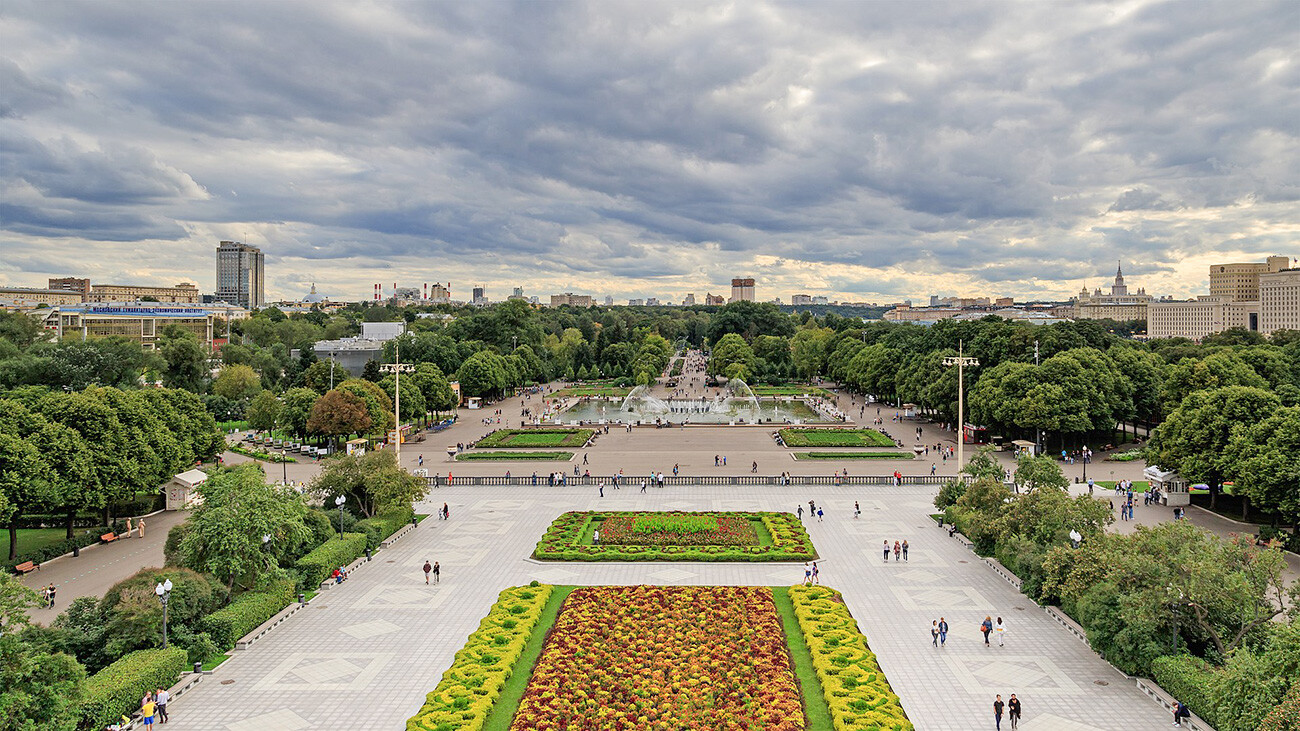
Gorky Park from above
Alexander SavinBy the beginning of the 2000s, the majority of the rides were removed, the Soviet pavilions had fallen into disarray and the park was quite a sorry sight. From May 2011, a massive renovation began, over the course of which the park became one of the most trendy and modern places in the capital.
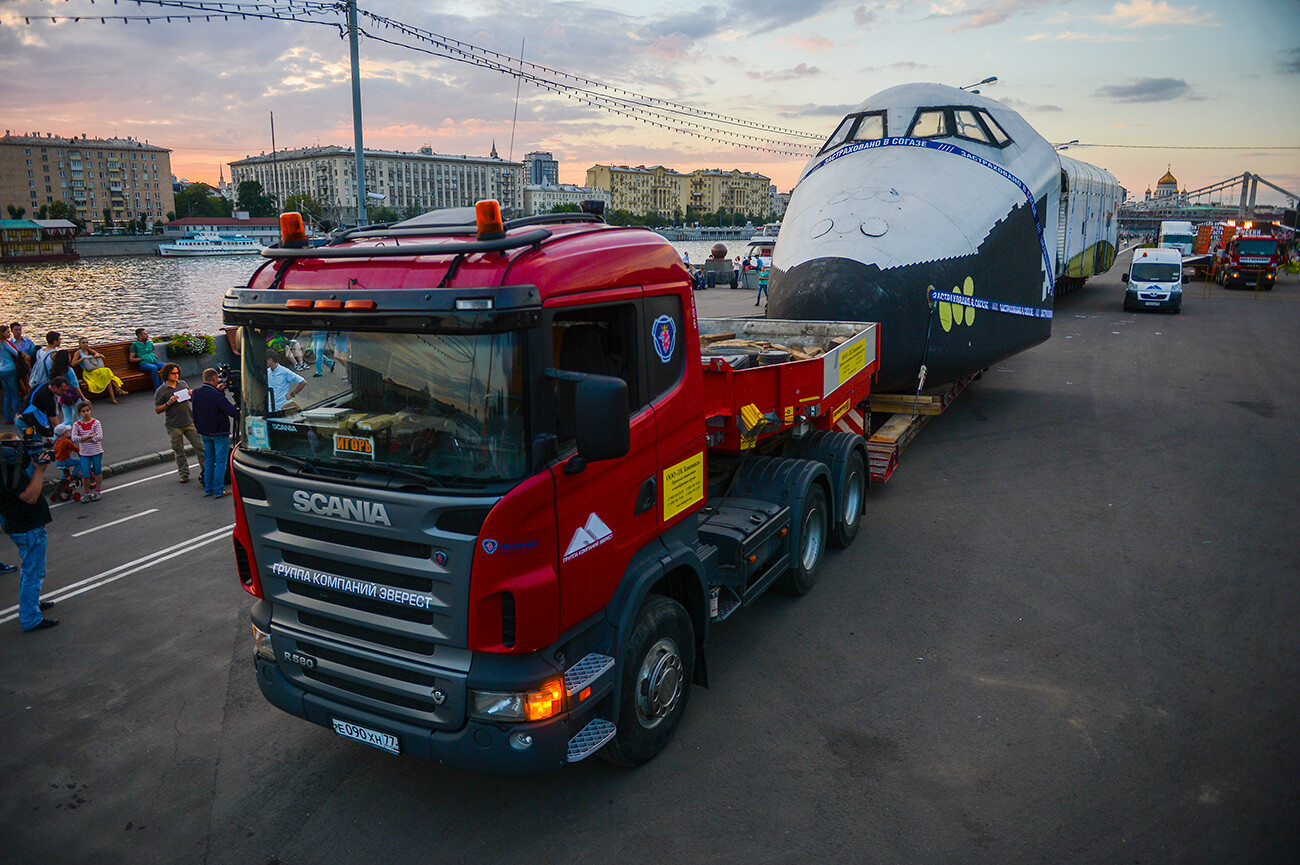
Until 2014, Gorky Park housed a model of the Buran spaceship (later it was moved to VDNKh)
Vladimir Astapkovich/SputnikLandscape design, bike lanes, sports grounds, new cafes, the first co-working spaces and one of the first free public Wi-Fi zones appeared there.

Skating rink in Gorky Park. Late 1930s
Emmanuil Yevzerikhin/MAMM/MDF/russiainphoto.ruDuring winter, the park’s pathways were covered with ice for ice skating back in Soviet times, as well. But, in 2011, the largest skating rink in Europe with artificial ice (at the time) was constructed in the park. For the first time, people could ice skate without having to wait for negative temperatures; hence, the ice skating season lasted until the middle of March.
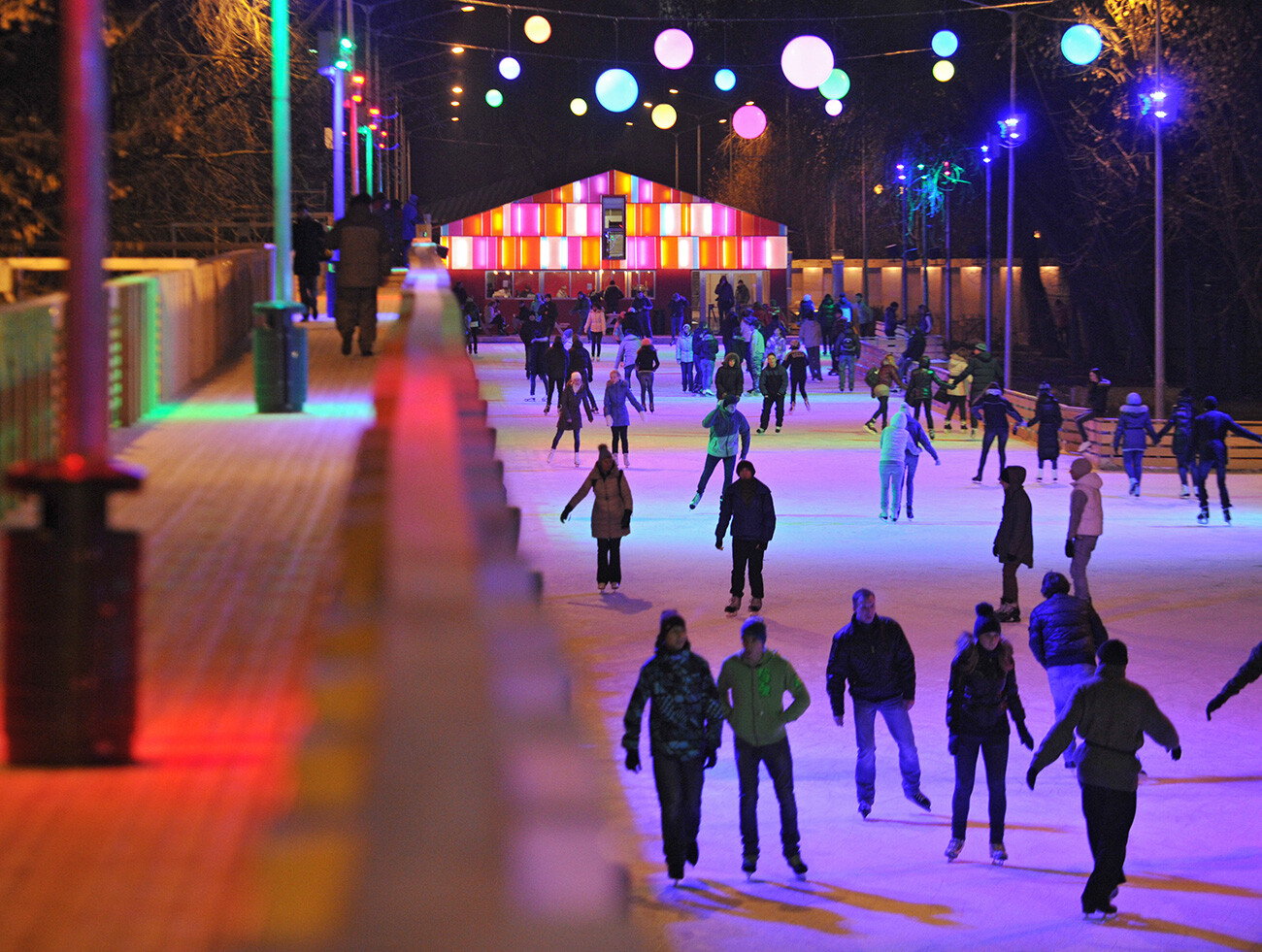
Gorky park's skating rink is now one of the largest in Europe
Artyom Zhitenev/SputnikThe total area of tracks and ice surface amounted to 15,000 square meters. Music, tents with tea and mulled wine, warm changing rooms and skate rentals supplemented the rink.
In 2012, one of the most trendy and influential cultural institutions – the Garage Museum of Contemporary Art, founded by Darya Zhukova and Roman Abramovich in 2008 – moved to Gorky Park. In many ways, it is this museum that is responsible for the “cultural leisure” Muscovites now experience in the park, conducting a broad number of exhibitions and lecture programs.
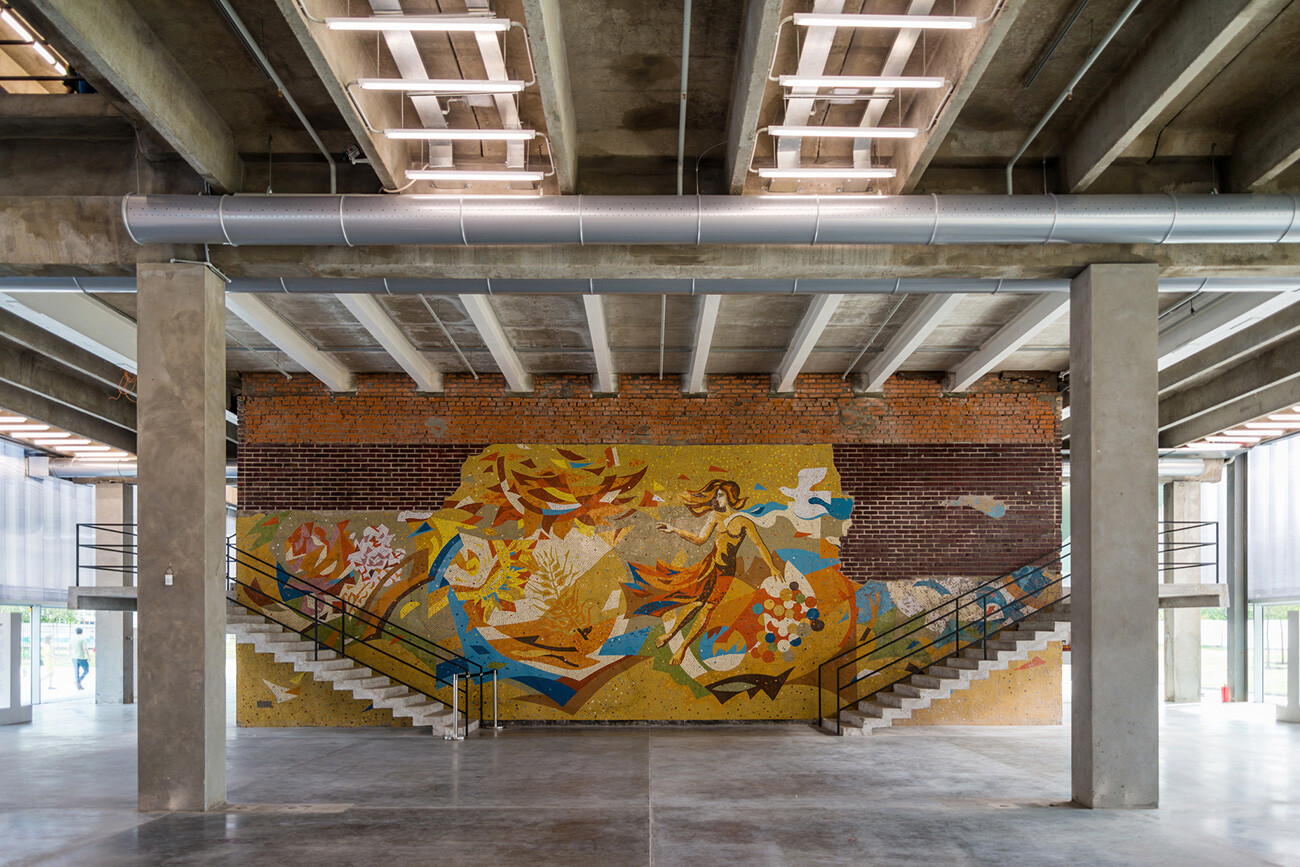
Soviet mosaics inside the Garage museum
Iwan Baan/OMAThe museum is located in the former building of the ‘Seasons’ restaurant, which was built in 1968. It was renovated for the Garage Museum by famous Dutch architect Rem Koolhaas and his OMA office. He turned the practically ruined Soviet building into a modern museum, taking into great consideration the surviving details, incorporating them successfully into the new design. And an old Soviet mosaic mural became one of the features of the new museum.
Dear readers,
Our website and social media accounts are under threat of being restricted or banned, due to the current circumstances. So, to keep up with our latest content, simply do the following:
If using any of Russia Beyond's content, partly or in full, always provide an active hyperlink to the original material.
Subscribe
to our newsletter!
Get the week's best stories straight to your inbox